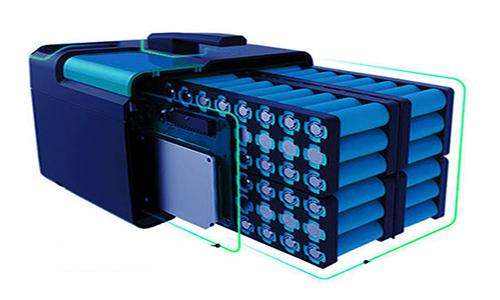Portable lithium battery
Jun 03, 2019 Pageview:1011
Look at the different portable devices near you. The chances are that they are powered by portable lithium batteries. Whether it be your smartphone or your tablet, all of these devices make use of lithium batteries. Therefore, it is safe to say that such batteries have become a household name across the world.
Considering their high density, lithium batteries have successfully been manufactured in compact sizes. Moreover, since they can be recharged, they are quite long lasting as well, especially compared to other traditional types of batteries. While lead-acid batteries might still lead specific industries, still portable lithium-ion batteries have managed to gain a significant place in every household.
Portable lithium battery types and specifications
It is essential to note that there are various other types of lithium ion batteries available. However, the five mentioned below are those that have been commercially established and tested. There are other options which are currently undergoing research. Each battery type differs from one another based on energy density, safety, discharge rate, reliability and power density.
The five commercially established batteries include the following:
1.Lithium-Cobalt Oxide Battery
Lithium-cobalt oxide batteries are found in portable electronics like cameras, cell phones and laptops. Their discharge rate is quite low, therefore making them ideal for extended battery life. Additionally, among all the other type of lithium batteries, Lithium-cobalt oxide batteries feature the highest energy density. It ranges from 110 to 190 Wh/kg. Since the battery includes cobalt, which is both hard to find and expensive, these portable batteries tend to be pricier than other options.
2.Lithium-Titanate Battery
One of the key distinctive features of lithium-titanate batteries is that they can efficiently operate at a very low temperature. The temperature can go as low as -40 degree Celsius and the batteries would still work. Apart from this, these batteries tend to feature a high rate of both charge and discharge. They have comparatively lower energy density than other options. It ranges from 30-110 Wh/kg. The inherent voltage it has is also low. While the standard voltage of batteries is 3.7V, this battery has a voltage of 2.4V.
3.Lithium-Iron Phosphate Battery
While some of the lithium batteries tend to get overheated, lithium-iron phosphate battery is one type which doesn’t pose this risk. They are often used to power medical equipment and tools. They have a considerably longer life than other batteries and an average energy density at 95-149 Wh/kg.
4.Lithium-Nickel Manganese Cobalt Oxide Battery
A Lithium-Nickel Manganese Cobalt Oxide battery does not heat up quickly and hence is a safe option. It is used in powering e-bikes, tools and electric power trains. Their energy density is also low, with a range of 95-130 Wh/kg. Again, since it has cobalt, which is expensive, these batteries aren’t cheap either.
5.Lithium-Manganese Oxide Battery
When it comes to offering a safe and affordable portable lithium battery, the type that comes to mind is Lithium-Manganese Oxide batteries. These batteries are quite flexible and can be used to power both hybrid vehicles and mobile phones alike. They have a high discharge rate and a low energy density of 110-120 Wh/kg.
How to make a portable lithium battery
There are three primary materials used in making a lithium battery. This includes a cathode, an anode and electrolyte. The electrolyte serves as an insulator for the electrons. When the cathode and anode are in a charged state, the former features a high concentration of lithium while the latter is depleted of it. During discharge, lithium leaves the concentrated anode, migrate through the electrolyte and attach to the cathode. Here, their electrons are collected, which are then used to power the device.
To make a lithium battery, you need to make a cell containing the three material. When the voltage is passed through the electrolyte, the reaction will automatically occur, thereby powering the concerned device.
While this process might seem full-proof and may suggest the continuous loop, there is one weakness in it all. Whenever ions migrate from anode to the cathode, a reaction occurs with the electrodes, whereby the ion remain embedded in the given material. This depletes the supply of free ions, who are the driver of this entire process. This is why a battery keeps on depleting and eventually fails. Also, overcharging can cause the ions to disintegrate, further stagnating the process. This is why, when making a lithium battery, it is essential to prevent overcharging.
The relationship between battery portability and performance
Lithium-ion batteries are one of the lightest and most portable batteries of all. Yet, at the same time, they feature a very high energy density. To understand the relationship between performance and portability, it is essential first to highlight that metrics of performance. There are various factors that the word can encompass, and the relationship with mobility will vary according to the definition used.
If the performance of the battery is being gauged based on energy density and rate of discharge, it is safe to say that, if we consider this definition of performance, portability and performance are directly related to one another.
However, one must not forget that various other factors should be considered when it comes to performance. This includes the durability of the batteries. As mentioned above, lithium batteries tend to undergo a reaction during operation which depletes their functionality. Also, they can only be recharged so many times before they fail. If performance is being measured in terms of durability, then the relationship is inverse.
Conclusion
Every type of battery in the world will have its drawbacks. While lithium batteries are no exception to this rule, the fact that there are various types, densities and discharge rates to choose from, gives manufacturers the chance to create custom batteries to suit the needs of the devices. This has made lithium batteries quite popular in today’s time. Continuous research about their functionality is bound to improve them further. For now, lithium-ion batteries are your best shot at getting high quality and performance.
Leave Message
Hottest Categories
-
Hottest Industry News
-
Latest Industry News












